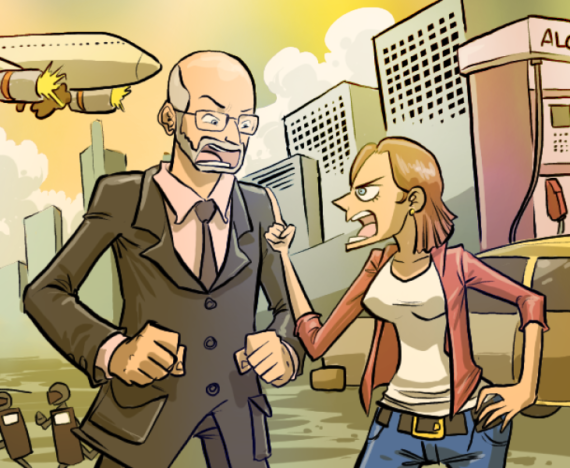Planning your own Business Travel is Half the fun!


I originally wrote this article as a chapter in ‘There’s no Business like International Business’ as I thought it would give the reader some useful background. My Editor disagreed, saying that it diverted too far from the storyline – and I agreed with her. I’m posting it here on the website for any reader who wants to get a better idea of why I’m so enthusiastic about travel – and how I ended up with the crazy itineraries that I travel in my book.
Do you love business travel as much as I do?
So many – in fact most – business travellers miss out on a lot of the enjoyment of international travel, and end up with less desirable itineraries and experiences, simply because they don’t plan the trip themselves. Executives leave it to their PAs, lower rungs leave it to the company travel department, and in most cases, both pass it all on to a travel agent, whose interpretation of their standing instructions is to book the most obvious option at the highest price the company travel policy will allow.
That’s not for me. I love booking flights – researching alternatives, looking for the best connections, working out how and where to get the lowest prices. Now, with the internet, it’s very easy, and accessible to all. Travel agents are unnecessary. But when I worked as one, for a year or so in the 1970s, travel agents were essential, and, unless it was just a matter of booking a package holiday out of a brochure, they needed some expertise. The skill was knowing how to consult a huge fat directory called the ABC World Airlines Guide, in conjunction with a good map.


ABC was updated every month. It was about 10cm thick (no exaggeration), A4 page size, printed in miniscule type on very thin paper, and it weighed a ton. I don’t remember now how many thousands of pages it had, but it made the Bible and the Lord of the Rings trilogy feel very lightweight! It was probably my statistical bent that made me love the fact that it was all in code – 3-letter codes for airports, 2-letter codes for airlines, 1-letter codes for fare classes, 3-character codes for aircraft types, and yet more codes for operational dates and days, transfers, codeshares…. Planning any journey turned me into a codebreaker. I joyfully devoured it, and dreamt of the day when I could book exotic itineraries for myself, rather than for my lucky customers who, claiming not to like business travel, told me that they were anything but lucky.
Routing around the world
Back then, my happy day was when I got a customer who wanted a RTW – Round The World – ticket, and, better still, wanted to make the most of it. The ones available then allowed 16 “coupons” – 16 point-to-point flights. The other rules were that you had to start and end in the same city, keep going in the same direction East to West or West to East, and keep the total mileage flown less than a certain maximum, I seem to remember 35,000 being the magic number. You could combine flights using any IATA airline in those days, which gave a huge amount of flexibility. RTW tickets still exist – and I’ve bought my own several times in the last 20 years – but passengers are now restricted to a single airline alliance, and there are different rules.
On such fortuitous occasions, with the client in front of me, a vast map of the world covering the wall behind me, and ABC at my fingertips, I could happily spend hours and hours working out itineraries.
Then came the next good bit, phoning the reservations agent at the airline operating the first segment, and actually trying to book all the flights. The fact that ABC said a flight existed didn’t always mean that it did, or that it was on the airline systems. The agents I called loved booking trips like these as much as I did – after all, most of the calls they spent their days answering were for routine there-and-back-in-a-day bookings to Paris or Amsterdam or Frankfurt; they rarely got to use all the training they’d been given. As a young man, I enjoyed many hour-long chat-ups with sexy-sounding agents that I’d never get to meet (all the airline call centres were in far-off places like Newcastle, and 99% of agents were female).
With a computer, but before the internet…
My own international business travel only really started in the mid-1990’s. By then, it had been 15 years since I had last worked as an agent. By then, home computers had really started to come into their own, but the internet had yet to be invented (or, more accurately, was yet to be rolled out to the general public). What I did have was Compuserve and AOL – online text-only tools, bringing with them not only nascent email but an app (as it would be called now) called EasySabre. Sabre was – and remains – one of the pre-eminent travel booking systems used by airlines.
This app was a simplified version of the system used professionally by travel agents and airlines, and allowed ordinary people, as long as they understood all those codes I was mentioning earlier, to type in a flight routing – for example LHR JFK for London Heathrow to New York Kennedy – together with dates, and get back a listing of flights with flight numbers, timings, aircraft types, classes of service available, and so on. Everything that was in ABC and more, without needing to have a copy. I found I could still remember most of the codes I needed. Now I could sit at home or in the office and plan my own travel! It wasn’t yet possible actually to buy a ticket online – one still had to call the airline or an agent to do that – but I loved being able to do my own planning, and often to know more than the reservations agent that I called for ticketing.
These days, the internet has made it easy for everyone to research itineraries and make their own bookings. No need to understand any codes. No need to deal with an agent. No need to hang on the phone for ages, or risk getting cut off. Low-cost airlines couldn’t have succeeded without it. Freddie Laker may have started the budget trend; he had the vision, but the world lacked the technology. The downside (from my point of view) is that there’s no longer any tool like EasySabre that shows all the possible flights with any airline from A to B – the tools that do show competing airlines on a route rarely show all of them, and always highlight “preferred” airlines, the ones who pay them to advertise. It’s the same with online agencies like Expedia and Ocado. Even going through all the obvious candidates, some flights that operate on minor routes in developing countries don’t appear. But whilst there’s no longer all the information in one place, I find it’s even more fun having to check several websites first to establish the best routing, and then check even more of them to get the best price.
Loyalty pays
I have to admit, though, that what really focuses the mind – or, rather, the choice – for business travellers is loyalty schemes. Frequent flyer miles with airlines, points for hotel stays and car hire; these schemes really work for the companies. Many of those business travellers who’ll complain to you about being forced to get flights at crazy times, early morning or late night, or that they have to stay miles away from where they need to be, are often the architects of their own discomfort, by insisting on travelling on a certain airline or staying in a certain hotel chain.
You may have seen the George Clooney film, “In the Air”; his character might be exaggerated (and it’s impossible to fly 7 million miles in a lifetime – I calculated it!) but it’s really close to the bone. Although the point of my travels was never, like his, trekking around the world to fire people (sorry, “let them go”), I’ve lived most of the plot. A film that, for me, was entertaining yet chilling.
The loyalty schemes are definitely worth it, and I’ve used them on most of my trips. The advantage that’s always talked about is upgrades – getting moved up from economy to business – but that’s been getting less and less common over the last 20 years.
In the 90s, when I had “high status” with one airline, but could only ever afford economy fares, I got upgraded at check-in more often than not. There was a routine that seemed to be followed in every airport I flew from.
“Do you want the good news or the bad news first?”
“The good news is you’ve been upgraded”.
“The bad news is that it’s a middle seat”.
Not such bad news.
Later, in the early 2000s, when I did a lot of US travel, airlines offered a more formal arrangement that I preferred. One airline I used a lot rewarded my loyalty with 8 international upgrade coupons a year that I could use as I chose. I also got more US domestic upgrades than I could ever use. But then, the international upgrades got progressively whittled away, first down to 6, then down again to 2; and the chances of getting a domestic upgrade became hit and miss. Why? Well, now the airlines could sell the seats. Demand had increased. Enough employers were now prepared to pay business class fares, which meant most seats were filled by paying passengers. By 2015, it was rare to find an unsold seat in business class on a long-haul flight.
Even without upgrades, though, loyalty schemes are still a draw. Airlines still allow passengers to accumulate “miles” or points, and they can be used for “paid” upgrades or “free” flights. That means using, say, 40,000 miles or 500,000 points or whatever for a free economy return flight to a place of your choosing. It’s an attractive offer, and you’re bound to meet someone who has gone on holiday to Tahiti or somewhere exotic for free. Me, for example! Until ten years ago, we flew to far-flung destinations for our December holidays every year in business class, sometimes even in First, for free, using the miles that I’d accumulated on trips during the year.
More recently, though, I’ve struggled to use my frequent flyer miles. Others recount the same experience. Firstly, the airlines don’t make all flights available, so even if you can get the date you want – and odds on you’ll only find earlier or later dates – the only flights on offer will be at an absurd hour or routed via somewhere inconvenient. For example, the last time I tried to get a flight from London to Sao Paulo with miles, the best I could find involved arriving in Lisbon at 22.30, flying out again at 07.00 (so not really enough time to go to a hotel for the night, and Lisbon airport, even the new terminal, is not somewhere one really wants to spend the night on a bench), then changing again in Fortaleza with a 6 hour stopover there. Non-stop, it’s a long 12 hour flight – this routing made it a 25 hour journey! Even if you’re prepared to put up with that, the flights are not really free – you still have to pay “taxes”, which often add up to hundreds of pounds and can total as much (or nearly as much) as just buying a ticket with money for the flight you actually want!
But it’s still worth being loyal to an airline alliance where you can, because if you earn enough points in a year to achieve a “silver” or “gold” status, you get free access to their business class lounges, even when you’re flying economy. As a relatively quiet place to relax, have a drink and even eat before the flight, being able to use a lounge arguably delivers more benefit to the traveller than an upgrade, especially on shorter flights.
Hotels do loyalty too; points can be exchanged for free nights (much more easily than changing miles for flights, and no taxes to pay) and increased status gets you upgraded rooms or suites and free breakfasts or drinks – and, in the more upmarket hotels, lounge access too. Makes it well worth staying miles away from where you really want to be, believe me!
So, I love loyalty schemes. I love the better travel experience that they bring as a result. But I am not, and never have been, a slave to them. I won’t sacrifice my beauty sleep for the sake of getting a few more air miles. And when one really travels the world, one soon needs to take a flight that’s only flown by some obscure local airline that doesn’t give points or miles, and stay in out-of-the-way places where no international hotel chain is ever likely to establish a presence.








